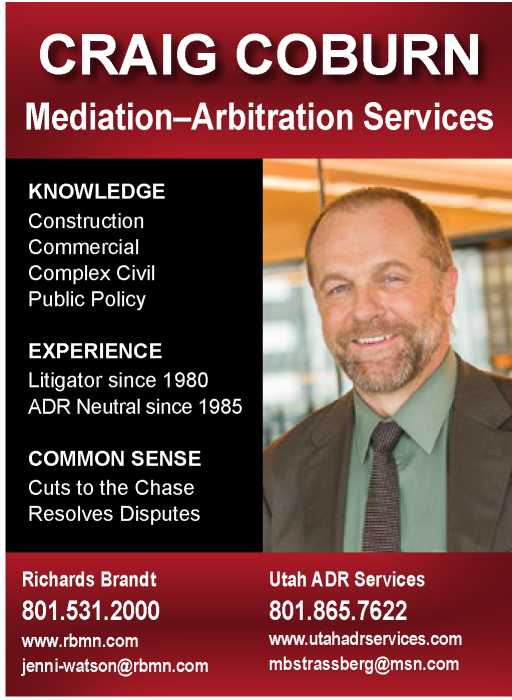Southern Utah
| Publication year | 2023 |
| Pages | 28 |
September, 2023
Southern Utah
The Top 10 Workers' Comp Cases All Injury Attorneys Should Know by Timothy P. Daniels
by Timothy P. Daniels
Utah attorneys sometimes have clients whose medical conditions are partially or totally caused by an industrial accident. A short review of the top ten Utah workers' comp cases will help us identify potentially valid workers' comp claims for our clients and advise them properly.
Some of the primary issues in a workers' comp case are medical causation (whether the injury was somehow related to the claimant's work); legal causation (whether a pre-existing condition made the injury just as likely to happen at work as at home); whether the employer offered light duty during the employee's period of recovery; and whether the claim is barred by a statute of limitations. These issues and others are addressed in the following Top 10.
1. Allen v. Industrial Commission, 729 P.2d 15 (Utah 1986).
Pre-existing Conditions and Legal Causation.
Facts: Mr. Allen worked in a grocery store and suffered a herniated disc while lifting crates of milk. He had suffered several prior back injuries. Since prior court decisions were mixed on the issue of legal causation, the Allen case is a restatement of Utah workers' comp law, now seemingly cited in every labor commission decision.
Rule: The Workers' Compensation Act requires an injured worker to prove the worker was injured "by accident arising out of and in the course of the employee's employment." Utah Code Ann. § 34A-2-401. Injured workers must prove (1) medical causation and (2) legal causation. Legal causation is the main issue in Allen. Many injured workers have some pre-existing condition, often simply due to age (i.e., mild degenerative disc disease in the lumbar spine).
Holding on Legal Causation:
Just because a person suffers a preexisting condition, he or she is not [necessarily] disqualified from obtaining compensation. However, [t]o meet the legal causation requirement, a claimant with a preexisting condition must show that the employment contributed something substantial to increase the risk he already faced in everyday life because of his condition. This additional element of risk in the workplace is usually supplied by an exertion greater than that undertaken in normal, everyday life. This extra exertion serves to offset the preexisting condition of the employee as a likely cause of the injury, thereby eliminating claims for impairments resulting from a personal risk rather than exertions at work. Thus, where the claimant suffers from a preexisting condition which contributes to the injury, an unusual or extraordinary exertion is required to prove legal causation.
Allen, 729 P.2d at 25.
Importance: The court looks at whether the work injury "involved some unusual and extraordinary exertion over and above the usual wear and tear exertions of nonemployment life." This is the key issue in many, many cases. Lifting more than fifty pounds is unusual, but taking a full garbage can to the
TIM DANIELS serves as a Reservist in the Air Force JAG Corps and manages a private practice, focusing on workers compensation litigation and adoptions.

street, changing a flat car tire, lifting a small child to chest height, and climbing the stairs in buildings are not unusual activities per the court. Id. at 26.
Legal Contours: The legal-causation issue is very fact-specific. Here are some examples of work activities or "exertions" that failed to meet the Allen standard for employees with a pre-existing medical condition:
(a) Ms. Rizzo, who had a pre-existing knee problem, tripped over the edge of a paver, started to fall forward, twisted her knee, but did not hit the ground because someone caught her. The labor commission wrote:
Ms. Rizzo's work activity in this case was merely stumbling, but not falling, as she walked across the plaza. The Commission finds that stumbling is a common activity typical of regular nonemployment life. Therefore, .. Ms. Rizzo has not met the more stringent standard of legal causation required under Allen, and is not entitled to benefits for her left-knee injury." Rizzo v. Utah Dep't of Commerce, Utah Labor Commission Case No. 09-0452. This case has been followed and upheld: "Tripping without falling, and being startled in the process, can reasonably be considered a part of ordinary nonemployment life.
Schreiber v. Labor Comm'n, 1999 UT App. 376.
(b) Mr. Wardle was a coal miner who had a pre-existing lumbar condition.
He stepped up eight to ten inches on to the surface of a slab of coal that had "˜sloughed' from the mine wall. As he was standing with both feet on the slab, the section that he was on broke off and dropped to the floor. Mr. Wardle dropped with it. He landed solidly on his feet. The drop did not cause his knees to buckle or cause him to fall or lurch. However, he felt immediate pain in his back.

Industrial, right? No. The Labor Commission said dropping eight to ten inches unexpectedly is not "unusual or extraordinary" because it is "similar to missing a step at the bottom of a flight of stairs, or stepping from a high curb."
Wardle v. Energy West Mining, Utah Labor Comm'n Case No. 03-1191.
(c) Other cases that were denied due to failure to meet the Allen standard (meaning, the Labor Commission determined the exertions were usual or ordinary) include the following:
• Slipping and hitting your knee on a hard object like a metal track. "It is not uncommon for a person to slip and strike a knee against the edge of a hard material such as a piece of furniture or a stair." Monroy v. Schreiber Foods, Inc., Utah Labor Comm'n Case No. 09-0861.
• Twisting knee while stepping down and later tripping on floor mat. The fact that the mat was greasy is irrelevant

to the worker's exertion. "Tripping over such surfaces frequently occurs in nonemployment life." Stennett v. Red Rock Restaurant, Utah...
To continue reading
Request your trial
